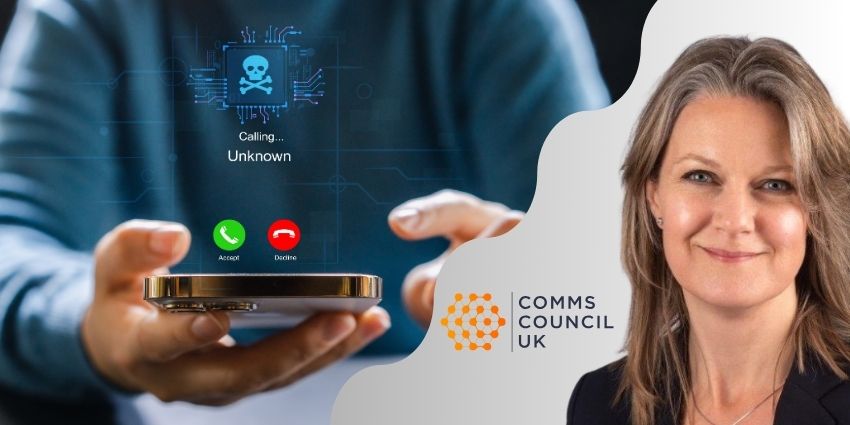CPaaS, or Communications Platform as a Service is one of the most exciting new developments in the communication space today. As the landscape continues to evolve, companies are increasingly looking for opportunities to build technology stacks that are designed specifically for them. The one-size-fits-all strategy is outdated, and CPaaS opens the door to something far more flexible.
The Cavell Group, a market leader in research on the cloud communications industry, has been exploring the possibilities of the CPaaS environment recently. The brand’s research into the potential of APIs and flexible communication environments aims to highlight the opportunities for future communication strategies for service providers of all shapes and sizes.
I caught up with Dom Black from the Cavell Group, to discuss the latest research that his team had uncovered about the CPaaS marketplace and an upcoming event opportunity where people can learn all about the CPaaS environment.
What Does CPaaS mean for Service Providers?

Lately, the definition of CPaaS has become increasingly complicated for many companies and customers alike. Like many buzzwords in the communication industry, it has begun to take on different meanings for different people. “Some people say that they want CPaaS, but what they mean is that they want an open API model that allows them to make things more customisable.”
According to Dom, there’s a lot of confusion in the marketplace, but everyone seems to agree on the fact that they want to move away from the fixed platforms that have made it challenging to integrate new solutions into communication strategies in the past. Enterprises want more flexibility and the ability to build a solution that fits them, and that’s what CPaaS seems to offer. However, vendors are positioning the CPaaS opportunity in a range of different ways.
“The way that we look at CPaaS is that you’ve got your two layers in a communication space. First, you’ve got your network layer, which is the thing running underneath, providing all your minutes and calls. Secondly, you’ve got your logic layer on top – the thing that makes sure all of the communication channels are routed to the right place. That’s what CPaaS is. Successful players are just making sure that the logic layer is as accessible as possible, giving people a chance to play with new tools and ideas.”
Is the Appetite for Platforms Growing?
Black told me that people are often getting confused with CPaaS because they’re trying to define it in a way that suits their business model, however, what CPaaS is, is a communication platform. For service providers, platforms have been a crucial part of the value proposition for decades. All UC solutions have been built on a foundation platform.
“What CPaaS does is give service providers more flexibility and options. It’s a world away from the closed options that were intended to be one-size-fits-all”
Cavell sees CPaaS as an agile and flexible solution that allows service providers to innovate and grow at a rapid pace. This agility is becoming increasingly important in a time where companies want to be able to access the latest disruptive tech at the click of a button.
“With AI and machine learning everywhere, companies need to be able to harness disruptive tools instantly.”
Cavell’s research into CPaaS is looking at how service providers can take advantage of the opportunities that CPaaS offers. According to Dom, there are plenty of options out there, from launching your own API store similar to what AT&T and KPN have done, building your own UCaaS service like Aircall or using a product such as Twilio Flex to offer contact centre to your customers. “There are a lot of providers that want to engage in CPaaS, but they don’t know what they want to do, or how they’re going to get started. Enterprises are demanding more flexable solutions and want to integrate communications into their applications and workflows but many current platforms cannot enable them to do so”
How Can Service Providers Succeed in CPaaS?
According to Black and the Cavell Group, we’re still in a time where CPaaS isn’t fully understood. Service providers have an opportunity to bring a combination of flexibility and reliability to their customers, but they need to know what CPaaS means to them first.
“We’re seeing providers realise that they can’t just deliver the platform as a service anymore. Instead, they need to offer services on top of that, like contact centres and embedded communications. This allows them to bring more value to the mix. The next stage of CPaaS isn’t just APIs, but services built off the CPaaS environment.”
Tell us About your Upcoming Event
For service providers and other communication leaders that want to learn more about the opportunities in CPaaS, Cavell will soon be hosting their Cloud Comms Summit, in Washington DC on September 11th and September 12th. The Summit will allow attendees to learn from the experts in cloud communications and take part in some crucial networking too.

Managed by the Cavell Group, the Cloud Comms Summit will bring the industry together in an incredible environment, to discuss the emerging technologies in the communication space, and look for new ways that businesses can transform.
Cavell will also be releasing their most recent whitepaper about the CPaaS environment shortly which will help UCaaS providers understand their strategy of moving into the CPaaS and API marketplace.







